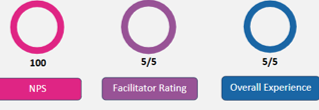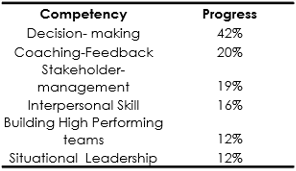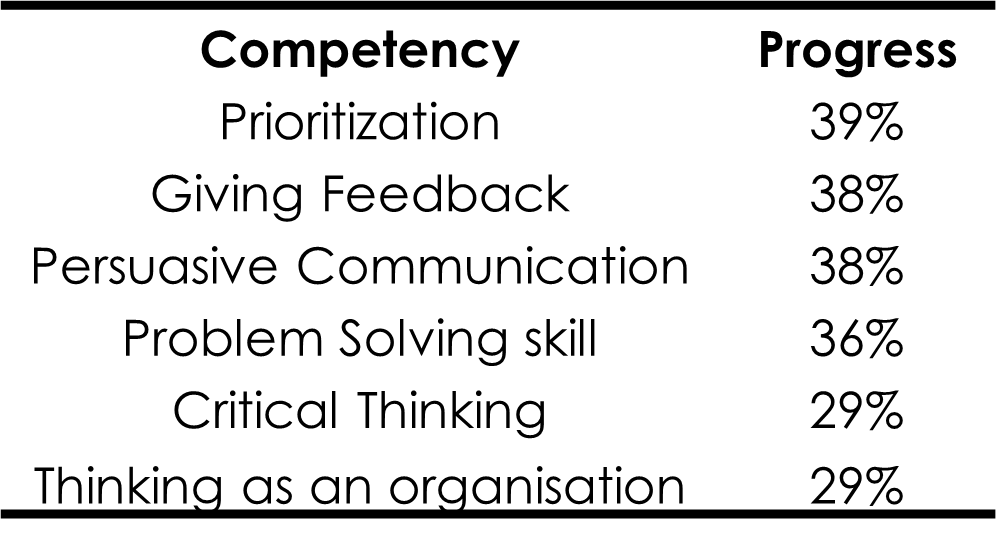Employee Communication Skills Training: A Deep Dive

In the intricate tapestry of skills that mold a competent employee, communication skills arguably serve as the golden thread binding everything together. Let’s explore why communication skills training is paramount and how it can fundamentally reshape the way businesses operate.
The Multifaceted Nature of Communication

Communication isn’t just about conveying information. It encompasses a gamut of competencies, from active listening and effective articulation to reading non-verbal cues and cultural nuances.
For businesses and organizations, understanding and addressing this complexity in employee training is paramount. Here’s why:
1. Active Listening:
This goes beyond merely hearing words. Active listening involves fully concentrating, understanding, and responding to the essence of what’s being shared. It is the ability to read between the lines. In the corporate realm, this skill is invaluable. It ensures that employees can grasp tasks and objectives, and also understand the underlying motivations and concerns.
2. Effective Articulation:
It’s not just about what you say, but how you say it. Effective articulation ensures clarity, precision, and persuasiveness in one’s speech. It minimizes misunderstandings and promotes clear task delegation.
3. Non-Verbal Cues:
A significant chunk of human communication is non-verbal, encompassing gestures, facial expressions, body language, etc.
In a business setting, being attuned to these silent signals can offer insights into team morale, client satisfaction, or even negotiation stances. Training employees to read and respond to these cues can prevent miscommunications and improve interpersonal interactions.
4. Cultural Nuances:
In our globalized world, businesses often transcend borders. Employees might find themselves interacting with colleagues, clients, or stakeholders from diverse cultural backgrounds. Understanding and respecting cultural nuances in communication – be it in terms of hierarchy, decision-making, or even humor – is pivotal. It ensures respect, fosters trust, and paves the way for productive collaborations.
5. Holistic Development:
When organizations approach communication training, addressing these varied aspects becomes crucial. It’s not enough to host a workshop on email etiquette or presentation skills. A holistic approach ensures that employees are equipped to navigate the multifaceted challenges of corporate communication, from boardroom discussions and client meetings to team collaborations and beyond.
Bridging the Interdepartmental Chasm

”In weak companies Politics win, In strong companies Best ideas win” – Steve Jobs
In matrixed organizations or those with complex hierarchies, silos are a common challenge. Effective communication serves as a bridge, fostering better interdepartmental collaboration. This synergy isn’t just about sending emails across departments; it’s about understanding the dynamics of cross-functional teams and ensuring seamless flow of information.
The impact of communication breakdowns in interdepartmental collaborations often extends beyond just missed emails or misunderstood objectives. It can lead to redundant efforts and misaligned goals.
For instance, consider a scenario where product managers in a tech company are all ready for a big product launch. The marketing department is gearing up for the grand unveiling, while the development team is grappling with unexpected technical glitches. Without transparent communication, the marketing team remains unaware of these hitches, leading to potential oversights in their campaign or, worse, promises that the product can’t deliver on. This strains interdepartmental relations and can also tarnish the company’s reputation with its customers.
Such scenarios underscore the importance of effective communication channels and protocols. It’s not merely about periodic updates but fostering an environment where teams proactively share challenges, insights, and feedback. High level of communications cultivate a culture of collaborative success.
Improving Client Relations using Communication Skills Training

Client interactions form the cornerstone of success for many services businesses. With effective communication training, employees can better interpret client needs, manage expectations, and address concerns, ensuring higher client satisfaction and retention.
There are several ways in which effective communication training can help with client interactions:
1. Clarity in Deliverables: Ensures both parties have a mutual understanding of project scopes and deliverables, minimizing ambiguities.
2. Active Feedback Loop: Promotes a culture where feedback, both positive and constructive, is shared regularly, fostering continuous improvement.
3. Conflict Resolution: Equips employees with techniques to address and resolve client concerns diplomatically, preserving the business relationship.
4. Tailored Communication: Enables employees to adapt their communication style to resonate with different clients, acknowledging diverse preferences and cultural nuances.
5. Transparent Reporting: Ensures clients are kept in the loop regarding progress, challenges, and milestones, fostering trust.
6. Empathetic Approach: Encourages understanding and validation of client concerns, leading to stronger relational bonds.
7. Effective Virtual Interactions: In a digital age, trains employees to communicate efficiently via virtual platforms, ensuring clear and concise online client interactions.
8. Negotiation Skills: Empowers employees to negotiate terms, timelines, and costs effectively, ensuring win-win outcomes.
9. Client Education: Enables employees to explain complex processes or products to clients in an accessible manner, ensuring informed decision-making.
Bolstering Leadership and Management with Communication Skills Training

Leadership isn’t just about vision; it’s about conveying that vision. Managers and leaders equipped with superior communication and coaching skills can inspire teams and handle conflicts adeptly.
What’s more, in an era dominated by cross-cultural collaborations, a leader’s ability to articulate and resonate across various audiences becomes the linchpin for fostering innovation and collaboration.
Facilitating Digital Communication
In the age of remote work and digital interfaces, communication isn’t limited to face-to-face interactions. Employees need to be adept at virtual communication tools, understanding the nuances of digital etiquette, and ensuring clarity in online interactions.
Driving Employee Engagement and Morale
Transparent and open communication fosters a culture of trust. When employees feel heard and valued, it boosts their engagement and morale, directly influencing productivity and reducing attrition.
The Tangible ROI of Communication Skills Training

It’s not just about soft outcomes. Companies investing in communication training often witness tangible returns – be it in terms of reduced project turnaround times, enhanced sales numbers, or positive client feedback loops. The ROI, though sometimes indirect, is undeniable.
While the intrinsic value of effective communication — such as heightened morale or improved teamwork — is widely recognized, it’s essential not to overlook the tangible, measurable benefits that directly impact an organization’s bottom line.
1. Reduced Project Turnaround Times:
Effective communication minimizes misunderstandings, streamlines processes, and expedites decision-making. When teams can collaborate without friction and understand their roles and responsibilities clearly, projects move forward more swiftly, reducing costly delays.
2. Improved Sales Numbers:
Sales teams equipped with advanced communication skills can better understand client needs, articulate value propositions, and negotiate deals. This not only increases the volume of sales but can also enhance the value of each sale, leading to higher revenue.
3. Positive Client Feedback Loops:
When clients feel understood and valued, their loyalty to the brand increases. This can lead to repeat business, referrals, and positive reviews, each of which can significantly boost a company’s market reputation and profitability.
4. Efficient Resource Allocation:
Clear communication reduces the likelihood of errors or redundant efforts, ensuring that resources, be it time, manpower, or capital, are utilized optimally. This efficiency can translate to substantial cost savings in the long run.
5. Employee Retention:
While this might seem like a soft outcome at first, the cost of hiring and training new employees is significant. When communication within an organization is fluid and transparent, employee satisfaction rises, leading to lower turnover rates and associated costs.
In a competitive business landscape, the dividends yielded from an investment in communication training are manifold. While some benefits, like enhanced brand reputation or improved team dynamics, might seem intangible, their long-term positive impact on profitability and growth is substantial. In essence, fostering a culture of effective communication is not just a qualitative strategy; it’s a quantitative game-changer.
Communication skills, often relegated to the backdrop in the face of technical competencies, are, in reality, the backbone of successful businesses. In today’s business world, it’s the communicative edge that sets companies apart, driving their top-line business success. Responding to this business need, we have been partnering with our clients to build and improve the communication skills of professionals across the rungs:
- Communication skills training for freshers and young professionals: At the entry-level, young professionals require orientation to conduct basic business communication effectively. Our Campus to Corporate program has modules dedicated to orienting fresh graduates to the basics of communication as it relates to the business world. We also deliver programs to develop communication skills over specific modes. This includes writing effective emails, making impactful presentations, or using the phone to have purposeful conversations.
- Communication skills training for mid and senior professionals: At this level, the professional now manages teams, works across teams, helms high-stakes communication with the client, and plays increasingly critical roles in leadership and building the organization’s culture. Our programs help managers have effective performance conversations, build people potential through coaching conversations, and learn the art of storytelling to influence internal and external stakeholders.
- Coaching for building communication skills: At the leadership level, we offer personalized support by way of one-on-one coaching with a credentialed coach. Coaching helps experienced leaders unravel the nuances of communication as it relates to their situation, become aware of the underlying thought/behaviour patterns that are holding them back, and offers them an opportunity to erase negative patterns and build new behaviors that make their communication and leadership superior.












